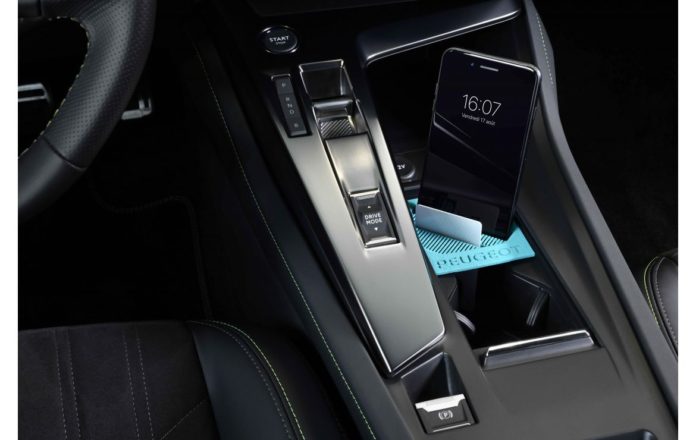This is the first time that 3D printing technology has been used to produce accessories for a PEUGEOT car.
When car manufacturer PEUGEOT unveiled the new 308 during the spring of 2021, the company did mention some accessories have been produced using 3D printing but did not lay emphasis on the details we were hoping to have regarding the use of the technology. Parent company Stellantis has revealed further details about these car accessories including the technologies used for their production.
These accessories are the result of a joint effort by PEUGEOT’s Design, Product and Research & Development teams in collaboration with HP Inc., Mäder and ERPRO. Well, HP Multi-jet fusion has been used for the production of accessories. Mäder brought its expertise in industrial coatings and painting while ERPRO as a service provider, ensured the fabrication process of the parts.
The accessories created for the new Peugeot 308 include a sunglasses holder, a can holder and a phone/card holder. The team behind this development aimed to develop products that are pleasant to the touch, light, solid and easy to use, and which enhance the interior well-being offered by the 308 and its new PEUGEOT i-Cockpit.
Making accessories more visible and attractive
The range of accessories was drawn up after a detailed analysis of how customers use storage in the car. As traditional materials did not meet the specifications, the PEUGEOT Design “Colours and Materials” team worked with its partners to develop a material with a more innovative look. 3D printing was the obvious solution, Peugeot said.
In just a few months, the teams have jointly developed a new polymer that has 3 main advantages:
Flexibility: a flexible, malleable and robust polymer,
Speed: the manufacturing process is very short and made to measure,
The quality of the rendering: highly accurate details thanks to very fine molecules.
The flexible material used is Ultrasint thermoplastic polyurethane (TPU), the fruit of a partnership between HP Inc. and materials producer BASF. This material offers durable, strong and flexible parts. It is a perfect material for impact absorbing parts that require high elasticity and for flexible mesh-like structures.
The manufacturing process with HP Multi Jet Fusion technology requires a binding agent to fuse the powder and a specific agent, known as a detailer to “smooth” the surface. As a reminder, HP Multi Jet Fusion uses a print head to selectively apply fusing and detailing agents to a polymer powder bed, which is then melted by heating elements to form a solid layer. After each layer (80µm thick), more powder is added to the previous bed, and the process repeats until the part is complete. During the post-processing stage, the team used a processing station where most of the remaining powder is removed by vacuum suction. The parts were thereafter sandblasted to remove the powder residue before going to the finishing department, where they are painted to improve aesthetics.
The use of TPU in a car interior is a new approach, which has been patented by the STELLANTIS Group. The range of accessories are currently made available on the PEUGEOT LIFESTYLE shop.
Remember, you can post free of charge job opportunities in the AM Industry on 3D ADEPT Media or look for a job via our job board. Make sure to follow us on our social networks and subscribe to our weekly newsletter : Facebook, Twitter, LinkedIn & Instagram ! If you want to be featured in the next issue of our digital magazine or if you hear a story that needs to be heard, make sure to send it to contact@3dadept.com






